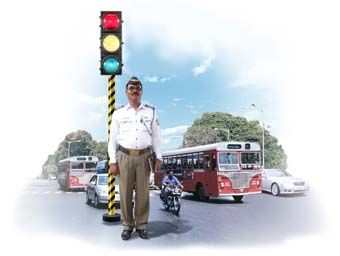Road Safety - Policy Holder
- Why Buy Life Insurance
- What Life Insurance to Buy
- How to Buy Life insurance and From Whom
- You and Your Life Insurance Policy: FAQs
- Dos and Don'ts for Life Insurance
- General Advice for Life Insurance
- Why Buy Health Insurance
- What Health Insurance to Buy
- How to Buy Health Insurance and From Whom
- You and Your Health Insurance Policy: FAQs
- Dos and Don'ts for Health Insurance
- General Advice for Health Insurance
- Why Buy Motor Insurance
- What Motor Insurance to Buy
- How to Buy Motor Insurance and From Whom
- You and Your Motor Insurance Policy: FAQs
- Dos and Don'ts for Motor Insurance
- General Advice for Motor Insurance
- Why Buy Property Insurance
- What Property Insurance to Buy
- How to Buy Property Insurance and From Whom
- You and Your Property Insurance Policy: FAQs
- Dos and Don'ts for Property Insurance
- General Advice for Property Insurance
- Why Buy Travel Insurance
- What Travel Insurance to Buy
- How to Buy Travel Insurance and From Whom
- You and Your Travel Insurance Policy: FAQs
- Dos and Don'ts for Travel Insurance
- General Advice for Travel Insurance
Road Safety
Prudence and Caution: Key to Road Safety
Sometime ago, the newspapers reported that two persons were killed and a third was critically injured when a bus rammed into their Toyota Qualis on the Nizamuddin Bridge in Delhi. Police say that the accident occurred while one of the victims was changing a flat tyre in the middle of the road.
A flat or punctured tyre is always a problem. Changing a flat tyre in the middle of the road can be dangerous. In such events how do you deal with a flat or a burst tyre?

1 If a tyre bursts while you are driving, try to keep control of your vehicle.
2 Grip the steering wheel firmly and allow the vehicle to roll to a stop at the side of the road.
3 Stop as soon as it is safe to do so.
4 Firm up your grip on the steering wheel, this helps you to keep the vehicle in control.
5 Get your vehicle off the road. Do not halt or park vehicles on the main carriageway.
6 Remember not to slam on brakes; let the car slow down gradually.
7 Keep your sidelights on if it is dark or if visibility is poor.
8 To get to a safe point, you may have to steer for a short distance
9 Continue to drive on a flat tyre; don't worry about it being damaged further.
10 As you slow down, try to manoeuvre the vehicle towards the kerb (extreme left).
11 If you have to change lanes, clearly signal your intentions and do it slowly and carefully.
12 Keep a watch on the traffic around you.
13 Keep all four warning lights blinking, which is a known distress signal.
14 Inform the traffic police or the Police Control Room vehicle at 100.
15 The nearest policeman can be asked to arrange to tow the vehicle from the main carriageway.
16 Once you have come off the main carriageway, keep the indicators on so that other road users are alerted of your problem and don't ram into you.
17 Your safety and the safety of others should be your only priority.
18 If you are aware of a service centre in proximity of the spot you are stranded in, walk over after locking up your vehicle.
19 Do not stand (or let anybody else stand) between your vehicle and the oncoming traffic.
20 At night, or in poor visibility conditions, do not stand where you will prevent other road users from seeing your lights.
21 If you cannot leave the carriageway or move into a service area you should:
Pull on as far to the left as possible, with your wheels turned to the left.
Leave the vehicle by the left-hand door and ensure your passengers do the same.
Do not attempt even simple repairs.
Ensure that passengers keep away from the carriageway, especially children.
22 Only change the tyre if you have the right equipment, and make sure you are aware of how to change it and can do so without putting yourself or others at risk. Otherwise call a breakdown service.
Contributed by General Insurance Corporation of India (GIC)





